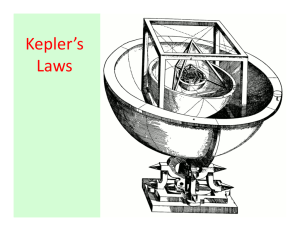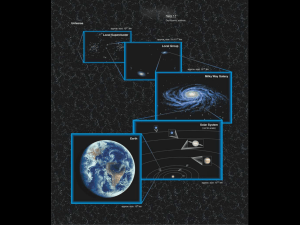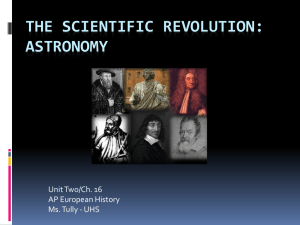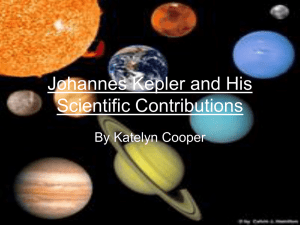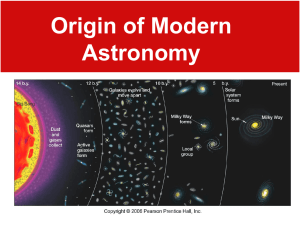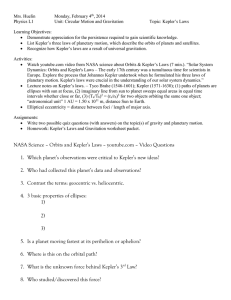Keplers Laws - UW PD . ORG
advertisement
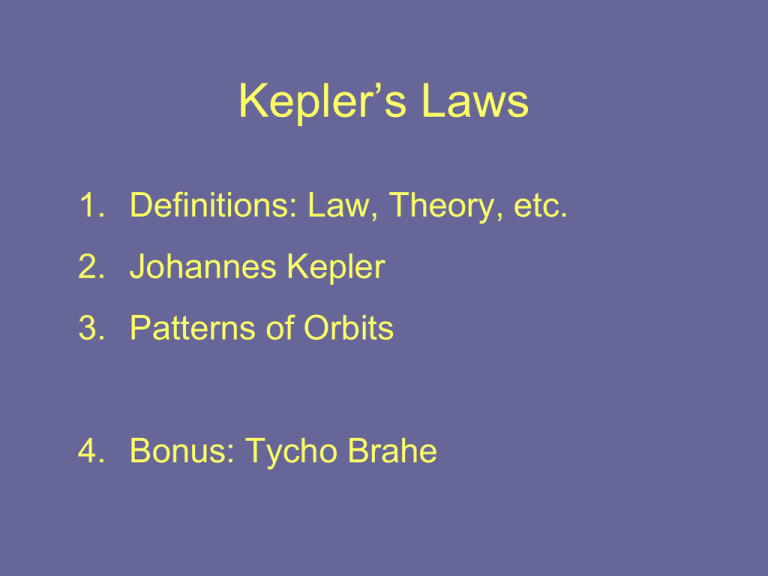
Kepler’s Laws 1. Definitions: Law, Theory, etc. 2. Johannes Kepler 3. Patterns of Orbits 4. Bonus: Tycho Brahe Fact • Data, measurements. – “This winter Boston got 108.6 inches of snow.” • Sometimes, obvious conclusions from data. – “Boston’s winter of 2014-2015 was the snowiest winter on record.” Law • A simple relationship or formula that is found through observations or experiment, and describes what happens, and may or may not address why it happens. • Laws can later be explained (and turn into a theory), or can remain unexplained and thus just be coincidences (sometimes called an empirical law). Bode’s Law Well, it’s also possible we just don’t understand planet formation well enough yet… Theory • A hypothesis (reason why) that has been tested many times and is accepted by the scientific community. Example Theories • • • • • • • Gravity Big Bang Nuclear fusion and fission Germs cause disease Dinosaurs were killed by an asteroid Evolution Global warming / climate change Kepler’s Laws don’t say WHY things happen, they only describe WHAT happens. Johannes Kepler Germany 1571-1630 http://en.wikipedia.org/wiki/Image:Johannes_Kepler_1610.jpg Kepler = Heliocentric Tycho Brahe’s student, used his data to support heliocentric Kepler’s Laws 1. Ellipses 2. Equal Areas 3. P2=a3 1. Planets orbit the Sun in ellipses, with the Sun at one focus http://www.astro.virginia.edu/class/oconnell/astr121/im/ellipse-geom-NS.gif http://hyperphysics.phy-astr.gsu.edu/hbase/imgmec/kep5.gif Kepler’s Laws 1. Ellipses 2. Equal Areas 3. P2=a3 2. Planets’ orbits sweep out equal areas in equal times. http://physics.uwyo.edu/~stark/outreach/Kepler/oldareaellipse.gif http://upload.wikimedia.org/wikipedia/commons/7/75/Kepler2.gif 2. Planets’ orbits sweep out equal areas in equal times. When one planet is closer to the Sun, it moves faster than when the same planet is farther from the Sun. Kepler’s Laws 1. Ellipses 2. Equal Areas 3. P2=a3 3. P2=a3 • Period - in Earth years • Semi-major axis (average distance from the Sun) - in AU • One planet close to the Sun orbits in a shorter time than a different planet farther from the Sun. Kepler’s Law of Periods Multiple Versions 1. P2=a3 – around the Sun, years and AUs 2. P2=ka3 – any units, but k is different for each unit set and for each central object 3. (Below) – true for all units, all central objects 2 PA a A PB aB 3 Newton’s Laws (including gravity) explain all of Kepler’s Laws. Newton’s Theories explain Kepler’s Laws 1. Ellipses • Gravity (F=GMm/r2) makes objects move in this sort of shape. 2. Equal Areas • Conservation of Angular Momentum, which follows from Newton’s Laws. 3. P2=a3 • Gravity (F=GMm/r2) causes this too. Kepler’s Laws 1. Ellipses 2. Equal Areas 3. P2=a3 Tycho Brahe Germany 1546-1601 http://en.wikipedia.org/wiki/Image:Tycho_Brahe.JPG Tycho Brahe = Geocentric Best measurements of planets Post-Test
